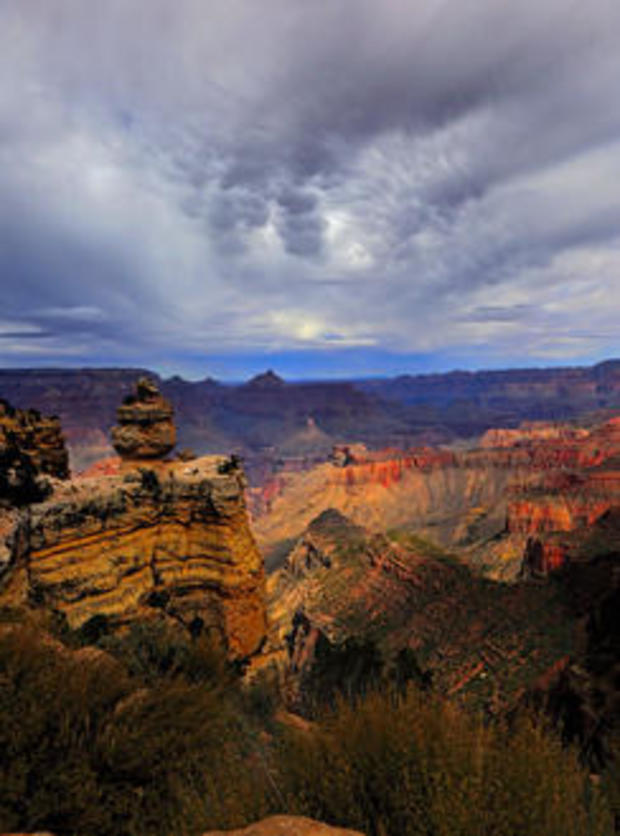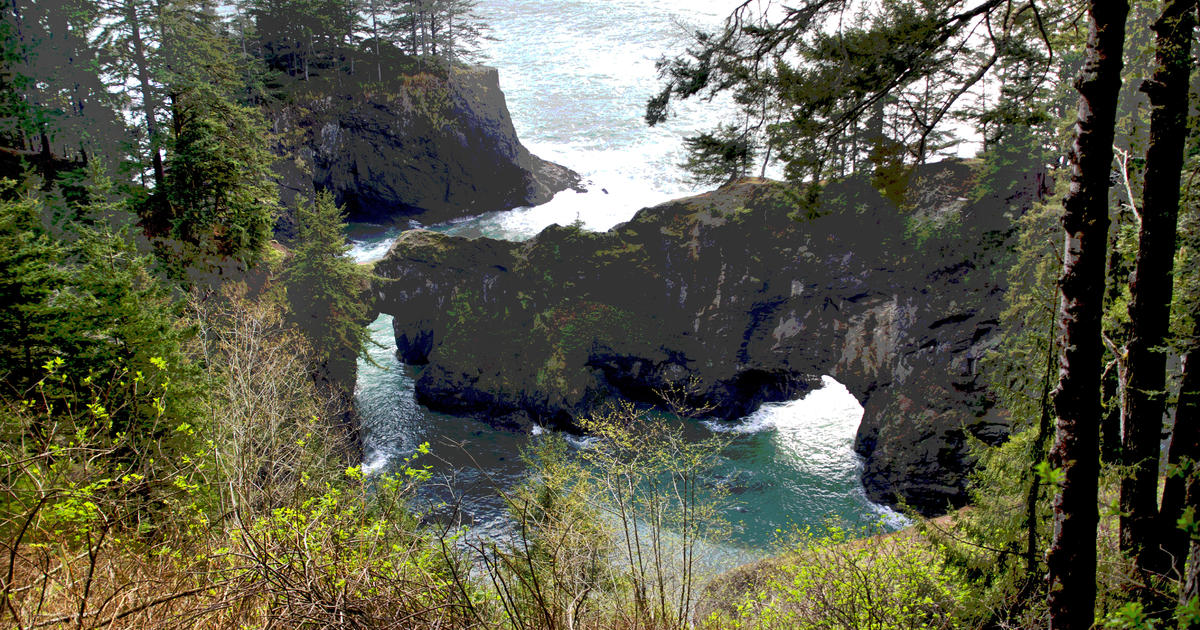Nature up close: The Grand Canyon
By "Sunday Morning" contributing videographer Judy Lehmberg.
My husband and I used to take students on a six-week field trip through the west. He taught environmental science and I taught plant taxonomy. It was some of the most rewarding teaching we have ever done. The students were excellent, they never missed a class, none of them dropped the classes, almost all of them made As or Bs, and we had a great time. We traveled from Baytown, Texas to New Mexico, Arizona, Colorado, Utah and Wyoming. It was so much fun to watch the students, some of whom had never been out of highly-industrialized Baytown. Seeing the looks on their faces the first time they saw clear, blue skies, stars, snow and mountains was rewarding.
One of my jobs during these trips was to take them down to the bottom of the Grand Canyon. We always went down from the north side because we could walk from spruce-fir forests on the top of the north rim through ponderosa pine forest, pinyon pine, juniper forest, desert and finally riparian vegetation at the bottom. There is no better way to learn than to be able to see, touch, feel and smell everything firsthand. It was total emersion and we loved it.
The Grand Canyon is big, and over a mile deep. It was a long way down and an even longer trip back up, or so it seemed. I will never forget getting to our campsite near the bottom on one of the trips. As we were setting up camp, I noticed two students had environmental science textbooks with them. Do you know how much those textbooks weigh? Bless their dedicated, responsible hearts! They left their tents at the top, to reduce weight, but they carried their textbooks with them. While I was considering a book burning I asked them "Why?" They had an environmental science test when we got back up. My heart went out to them. I could have told them what they needed to know, but they brought those damn books down anyway.
The Grand Canyon is a great place to study biomes and geology. It is one the most complete rock sequences on Earth, with nearly 40 exposed layers. Walking from the top of the north rim down is literally a walk through time, from a little over 200 million years ago at the top to almost two billion years ago at the bottom. In Precambrian time, almost 2.5 billion years ago, mud, sand, silt and volcanic ash were deposited in a marine basin to form what is now the bottom layer of the Grand Canyon, the Vishnu basement rocks. They were later metamorphosed and intruded by igneous rocks.
Over the last two billion years what is now the Grand Canyon has been covered by lava, inland seas, and sand dunes. The lowest layers have metamorphosed and intruded with igneous rocks; mountains have formed and been eroded. Finally, five or six million years ago, the Colorado River cut through the area as the Colorado Plateau uplifted.
As my husband likes to say, there is a lot of geology down there!
If, by chance, anyone reading this is one of our summer field trip students (or any of our students), please contact us. I'm on Facebook and still have my Lee College email. I would love to hear from you.
For more info:
- Grand Canyon National Park, Arizona (NPS)
Judy Lehmberg is a former college biology teacher who now shoots nature videos.
For more info:
- Judy Lehmberg (Official site)
- Judy Lehmberg's YouTube Channel
To watch extended "Sunday Morning" Nature videos click here!




